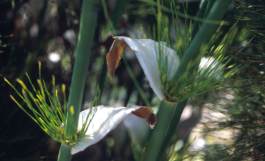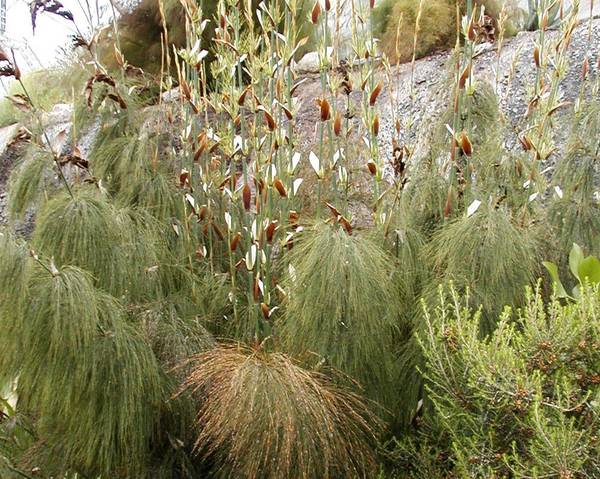Elegia capensis Fountain Rush
Elegia capensis Fountain Rush
Couldn't load pickup availability
Elegia capensis Fountain Rush
The stems (culms) grow from underground rhizomes, are quite thick, divided into sections (internodes) like bamboo plants and can be up to 3 m tall. At each node there is a circle of clumps of long, needle-like branches, which give the plant its horsetail-like appearance. The young stems also have a large, leaf-like structure or sheath around the stem at each node, which protects the growing point as each section is formed. As the stem grows older, these sheaths become stiff and parchment-like and stand away from the stem. This is a very decorative stage of the growth of the plant and to an observant gardener, the plants produce an intriguing crackling noise as the sheaths dry out in the sun and the plants seem to whisper to the garden around them. When the plants are nearly ready to flower, the sheaths fall off and leave the stems with a thin line and the long, fully-grown clumps of needle-like branches.
The young stems with their decorative, furled leaf sheaths are used for flower arranging.
The plants are best grown from seed, which is produced in large quantities by the female plants. The plants adapt to a large variety of soil types but do not like to grow in heavy clay soils or in soils with a clay layer.
The best time for planting is at the beginning of April-May. The plants need regular watering to look at their best. They may be fed with standard organic fertilizers, a slow-release fertilizer or by sprinkling the surrounding soil with a small amount of ammonium sulfate during the growing season. Sometimes this species will suddenly start to look yellowish, showing a need for a fairly high nitrogen fertilizer.
Price is for 5 seeds


Collapsible content
Fair Use Disclaimer
Our website may contain content not authorized for use by its owner but use of this material falls under the guidelines of fair use (They are for educational purposes only to show the plant only).
If you want to find our more or own any images displayed on our website and disagree with our assessment it constitutes 'fair use' please click here.


